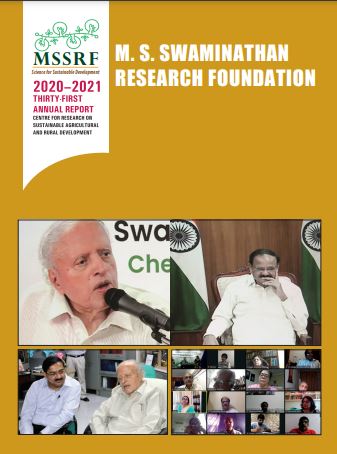Climate change and sea level rise is increasingly affecting coastal regions of India. Intrusion of sea water into agricultural lands in coastal regions is increasing soil salinity (increasing soil sodium ion content), affecting agricultural productivity. Roots are plant organs that first perceive salt in the soil that is then transported into root tissues, into the xylem for transport to aerial organs (leaf tissues/reproductive parts). Salinity disrupts ion homeostasis in plants (mostly potassium ions that is a macro-ion needed for plant growth and development).
In the genus Oryza, twenty two rice species are recognized. Of these, Asian cultivated rice is Oryza sativa that grows in diverse ecological regions. However, most rice varieties (including those grown on a commercial scale) are either salt sensitive or tolerate salt to a moderate extent. However, naturally adapted rice varieties/landraces(farmer developed varieties) found in coastal regions of the world show more salt tolerance. For cultivated Asian rice, evaluation of this natural variation in salt tolerance in landraces, has resulted in the identification of a segment of chromosome 1 of rice (rice has 12 chromosomes) that confers salinity tolerance, the so called ‘saltol’ locus. This region of chromosome 1 (harbouring several genes), when transferred to sensitive rice varieties from salt tolerant landraces (by breeding), confers tolerance to sodium ions (or salinity). Detailed analysis of this region of the chromosome 1 of rice led to the identification of a sodium transporter gene (OsHKT1;5) as being responsible for conferring salinity tolerance. Natural sequence variation in this gene confers salinity tolerance in salt tolerant rice landraces (Pokkali and Nona Bokra). Salt sensitive rice varieties differ from tolerant ones in efficiently removing salt from the xylem sap (controlled by the OsHKT1;5 gene) and to store it in xylem parenchyma cells. This means less salt moves to the leaves in salt tolerant varieties, causing less damage to the leaf tissues. This is crucial, as damage to leaves due to excess salt leads to reduced transport of photosynthate to developing grains and reduced grain yield.
While wild rice species are donors of traits governing yield, biotic and abiotic stress tolerance, Oryza coarctata (= Porteresia coarctata) is the only species of wild rice that is known to be naturally salt tolerant. Researchers from MSSRF, working collaboratively with the Institute for Biochemistry and Plant Molecular Physiology (B&PMP, Montpellier, France), National Centre for Biological Sciences (NCBS, Bengaluru) and the University of Tasmania (UTAS, Hobart) have examined the comparative function of the HKT1;5 gene from O. coarctata (relative to cultivated rice OsHKT1;5) using a multidisciplinary approach. It could be hypothesized, that being highly salt tolerant, O. coarctata would have a more efficient version of the HKT1;5 sodium transporter than salt sensitive landraces of cultivated rice and possibly even than salt tolerant cultivated rice ones. Actually, this work, recently published in the Plant and Cell Physiology (Somasundaram et al., 2020), shows that the HKT1;5 transporter from O. coarctata shows lower sodium transport capacities in the presence of low sodium ion concentrations than OsHKT1;5) but higher sodium transport capacities (higher conductance) in the presence of high Na+ concentrations. This is in part due to lower Na+ transport affinity than its counterpart (OsHKT1;5) from salt sensitive rice varieties. Thus, O. coarctata has more efficient mechanisms operating in its root tissues under salinity that retrieves sodium ions from the xylem sap than salt sensitive rice species.
Salt sequestration in leaf away from cell cytosol (in vacuoles) is an energetically expensive process. The above study suggests that varieties/landraces that show reduced translocation of sodium ions to the shoots under salinity due to higher retrieval of Na+ from xylem sap in the roots would less need to ‘efficiently sequester’ salt in the leaves and would less expend valuable photosynthate energy in sequestering sodium. Such landraces would hypothetically show lower affinity sodium transport conferred by HKT1;5. Such landraces could be used in further breeding programs to enhance rice salinity tolerance.
This work was carried out jointly in the laboratories of Dr. Gayatri Venkataraman (MSSRF), Dr. Anne-Aliénor Véry (B&PMP, France), Prof. R. Sowdhamini (NCBS, Bengaluru) and Prof. Sergey Shabala (UTAS, Hobart, Australia).

